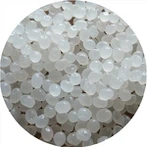Finland's VTT Technology Research Center Ltd. announced that it is currently experimenting with a new transparent cellulose film to reduce microplastics as an alternative to traditional plastics in food packaging.
VTT believes that regenerated or recrystallized cellulose can replace plastic film, which is difficult to recycle and misplaced after use. Ali Harlin, research professor at VTT, said: "We can produce cellulose films that are transparent and flexible. Consumers can't tell the difference between the crystal-clear material and traditional oil-based plastics. "
The cellulose membrane can resist moisture, but in nature, it disappears completely like a piece of paper. The product is bio-based and biodegradable."
Plastics allow consumers to see products while protecting them, but once used, many packaging can be a source of problems, VTT said. When a package has paper and plastic, consumers can be confused about whether cardboard can be recycled, or whether the plastic needs to be ripped off first.
People can't think of a better way to dispose of it and put several packages in mixed garbage. Plastic that ends up in cardboard recycling bins can be phased out, but the plastic usually ends up being incinerated, VTT said.
Finland is currently more of a packaging material country than a printing paper country. Last year, sales of cardboard surpassed paper for the first time. The forestry industry is looking for new products with a large market, thus bringing added value. Flexible, transparent cellulose films are one such product. Last year, the global plastic film market was about $110 billion. Atte Virtanen, Vice President of Biomaterials Processing and Products at VTT, said: “The cellulose film developed by VTT can replace plastic as a more environmentally friendly solution. It also makes recycling easy as it can be placed in cardboard recycling along with other packaging ."
Virtanen added: "VTT has been studying cellulose films for over a decade and has been studying regenerated cellulose in transparent films for over six years." The packaging material could be widely available for industrial use within five to seven years.









